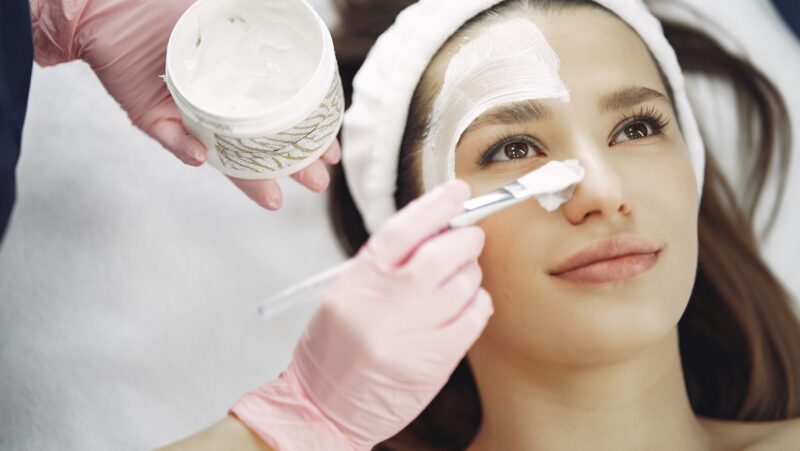
Battling morning breath, trying to fight off that sugary film after a snack, or even just wanting to feel confident in your smiles. Mouthwash claims to help with all of these, but how exactly does it work? Is it really worth the extra swish? This article will uncover the secrets behind this bathroom cabinet staple. It’ll break down the different types of mouthwash, their ingredients, and the science that makes them tick. By the end, you’ll be armed with the knowledge to make the best choices for your own oral health routine. So, grab your favorite flavor and dive in!
The Different Types of Mouthwash
There are two distinct categories of mouthwashes each with its own purpose and benefits:
Cosmetic Mouthwash
This type is designed to give you a quick burst of freshness, temporarily masking any unpleasant odors. You might recognize this from those mini bottles you grab on the go or the ones that promise “12-hour fresh breath.” While they may make your mouth feel minty and clean, they don’t actually address any underlying oral health issues.
Therapeutic Mouthwash
Therapeutic mouthwash contains active ingredients that target specific concerns, such as plaque buildup, gingivitis, tooth decay, and yes, even bad breath. Some of these mouthwashes are available over the counter, while others may require a prescription from your dentist.
- Antiplaque mouthwash: Helps prevent the accumulation of plaque, the sticky film of bacteria that can lead to cavities and gum disease.
- Anti gingivitis mouthwash: Reduces gum inflammation and helps fight gingivitis, the early stage of gum disease.
- Fluoride mouthwash: Strengthens tooth enamel, making it more resistant to decay.
- Antibacterial mouthwash: Kills bacteria in the mouth, which can help prevent a variety of oral health problems.
Choosing the right mouthwash can feel overwhelming with so many options on the market. It’s important to consult with dental professionals like those at Great Hill Dental to determine which type is best suited for your individual needs. They can assess your oral health and recommend a mouthwash that complements your existing routine, ensuring you get the most out of your swishing sessions.
The Ingredients of Mouthwash
Have you ever glanced at the back of a mouthwash bottle and wondered what all those ingredients are? Here’s a breakdown the key ingredients you might find:
Antibacterial Agents
You might see names like chlorhexidine, cetylpyridinium chloride, or even essential oils like eucalyptol and menthol. They work by either killing bacteria directly or making it harder for them to survive and multiply.
Fluoride
Fluoride strengthens enamel, the hard outer layer, making it more resistant to the acid attacks that cause cavities. If you’re prone to tooth decay, a fluoride mouthwash could be your new best friend.
Antiplaque Agents
This ingredient helps prevent the buildup of plaque, that sticky film of bacteria that clings to your teeth and gums.
Astringents
Have you ever felt that tightening sensation in your mouth after using mouthwash? That’s the work of astringents. They can temporarily shrink tissues, which may help reduce inflammation in the gums.
Humectants
If you suffer from dry mouth, look for a mouthwash with humectants. These ingredients help your mouth retain moisture, preventing that parched feeling.
Surfactants
Surfactants help loosen debris and food particles, making them easier to rinse away.
Alcohol
Some mouthwashes contain alcohol, which can enhance the antibacterial action of other ingredients. However, it can also be drying and cause a burning sensation for some people.
Now that you know what to look for, you can choose a mouthwash that caters to your specific needs. Whether you want to fight plaque, strengthen your enamel, or simply freshen your breath, there’s a mouthwash out there with the right blend of ingredients for you.
The Science Behind How Mouthwash Works
It’s time to dive into the nitty-gritty of what makes mouthwash work:
Antibacterial Action
Mouthwash with antibacterial ingredients goes to battle against the harmful bacteria in your mouth. These tiny troublemakers are responsible for all sorts of oral health woes, from cavities to gum disease. The mouthwash either kills them directly or weakens them so they can’t cause as much damage.
Plaque and Gingivitis Reduction
Mouthwash plays a crucial role in reducing plaque and gingivitis. It disrupts plaque formation and decreases the number of bacteria in your mouth. Many mouthwashes contain ingredients specifically designed to break down existing plaque, providing you with a head start toward achieving a healthier smile.
Breath Freshening
Many mouthwashes contain essential oils like menthol and eucalyptol, which give you that burst of freshness and temporarily mask bad breath.
Mouthwash is a powerful tool that can help protect your teeth and gums. Of course, it’s not a substitute for brushing and flossing, but it’s a valuable addition to your oral hygiene routine. By understanding how mouthwash works, you can appreciate its benefits and choose the right one for your needs.
Proper Use of Mouthwash
Now that you know what’s in your mouthwash, let’s talk about how to use it effectively.
Once you’re ready to swish, follow these steps:
Measure
Use the cap or a measuring cup to get the right amount of mouthwash.

More isn’t always better – stick to the recommended dose on the bottle.
Swish
Vigorously swish the mouthwash around your mouth for at least 30 seconds. Make sure it reaches all the nooks and crannies, including the back of your throat.
Gargle (if directed)
Some mouthwashes recommend gargling for a few seconds to reach the back of your throat and kill any lingering bacteria. Check the label for instructions.
Spit
Spit out the mouthwash completely. Don’t swallow it – it’s not meant to be ingested.
Don’t Rinse
Avoid rinsing your mouth with water after using mouthwash. This allows the active ingredients to stay on your teeth and gums for longer, giving them more time to work their magic.
And that’s it! It’s a simple routine, but it can make a big difference in your oral health. Aim to use mouthwash twice a day, after brushing and flossing, for optimal results.
Final Thoughts
So, there you have it – the science behind that minty swirl. Armed with this knowledge, you can confidently choose a mouthwash that complements your oral care routine, giving your teeth and gums the extra love they deserve. Remember, a healthy mouth is a happy mouth, and a happy mouth leads to a confident smile. So go ahead, swish with confidence, and let your smile shine!













